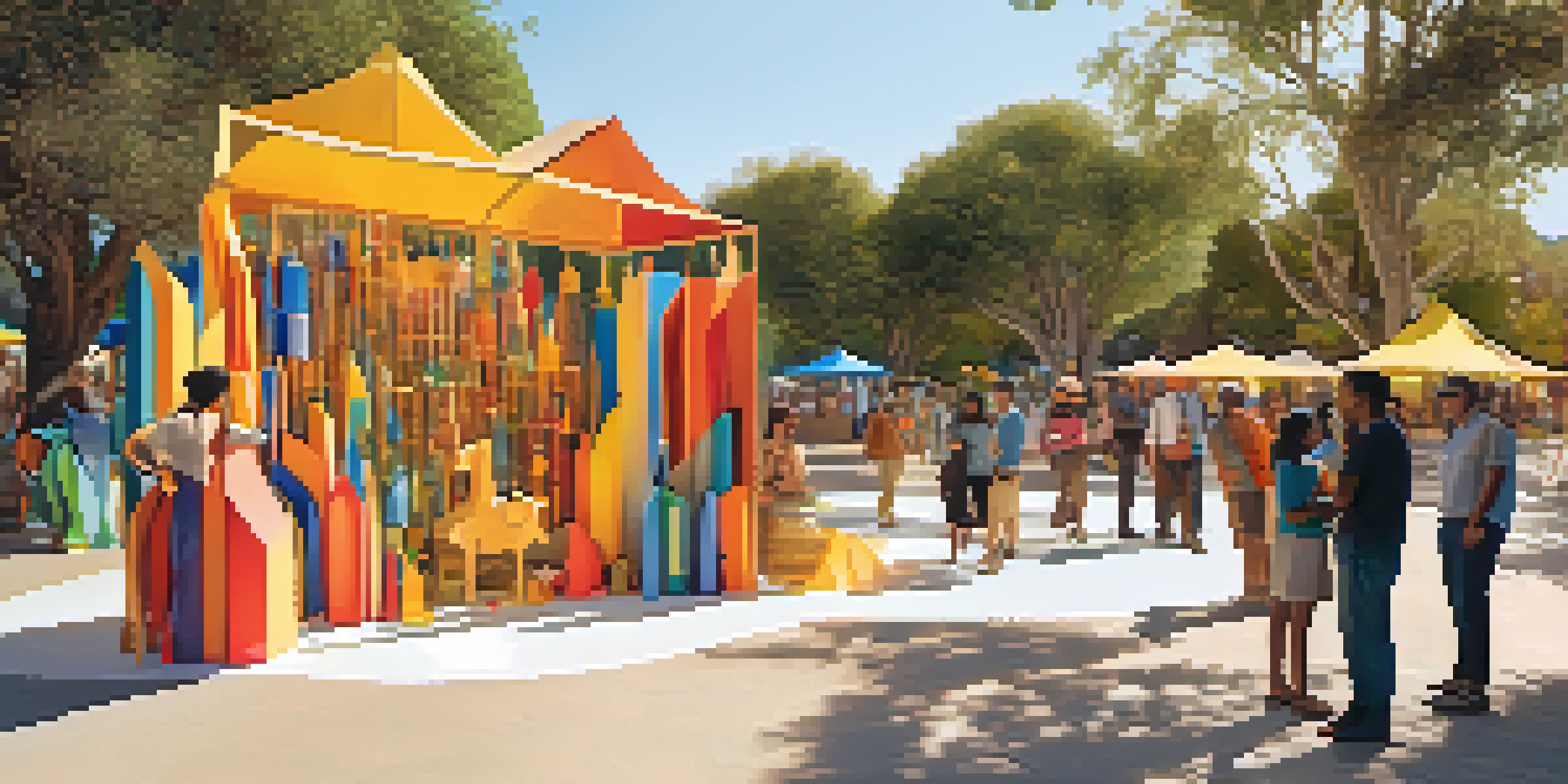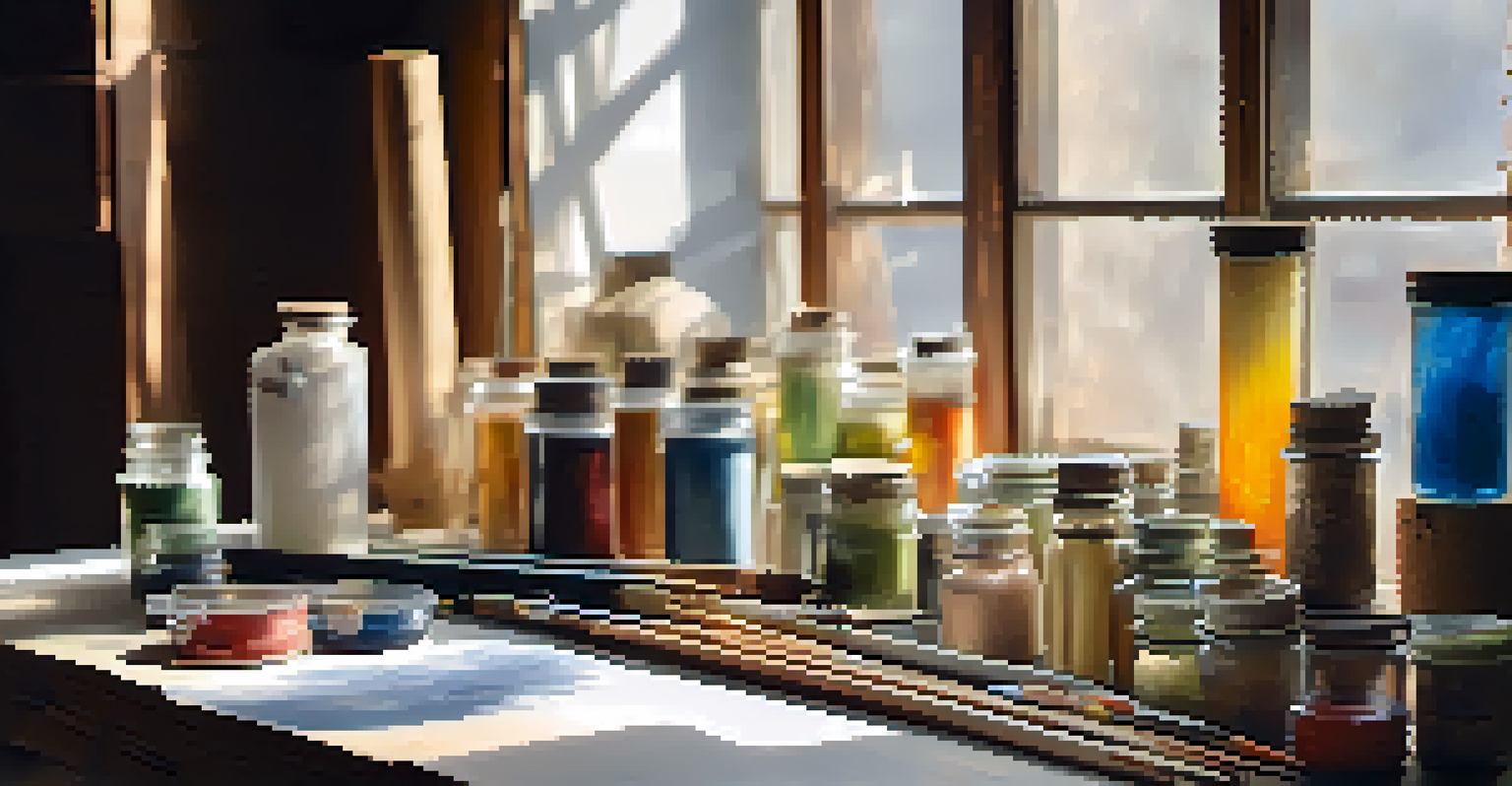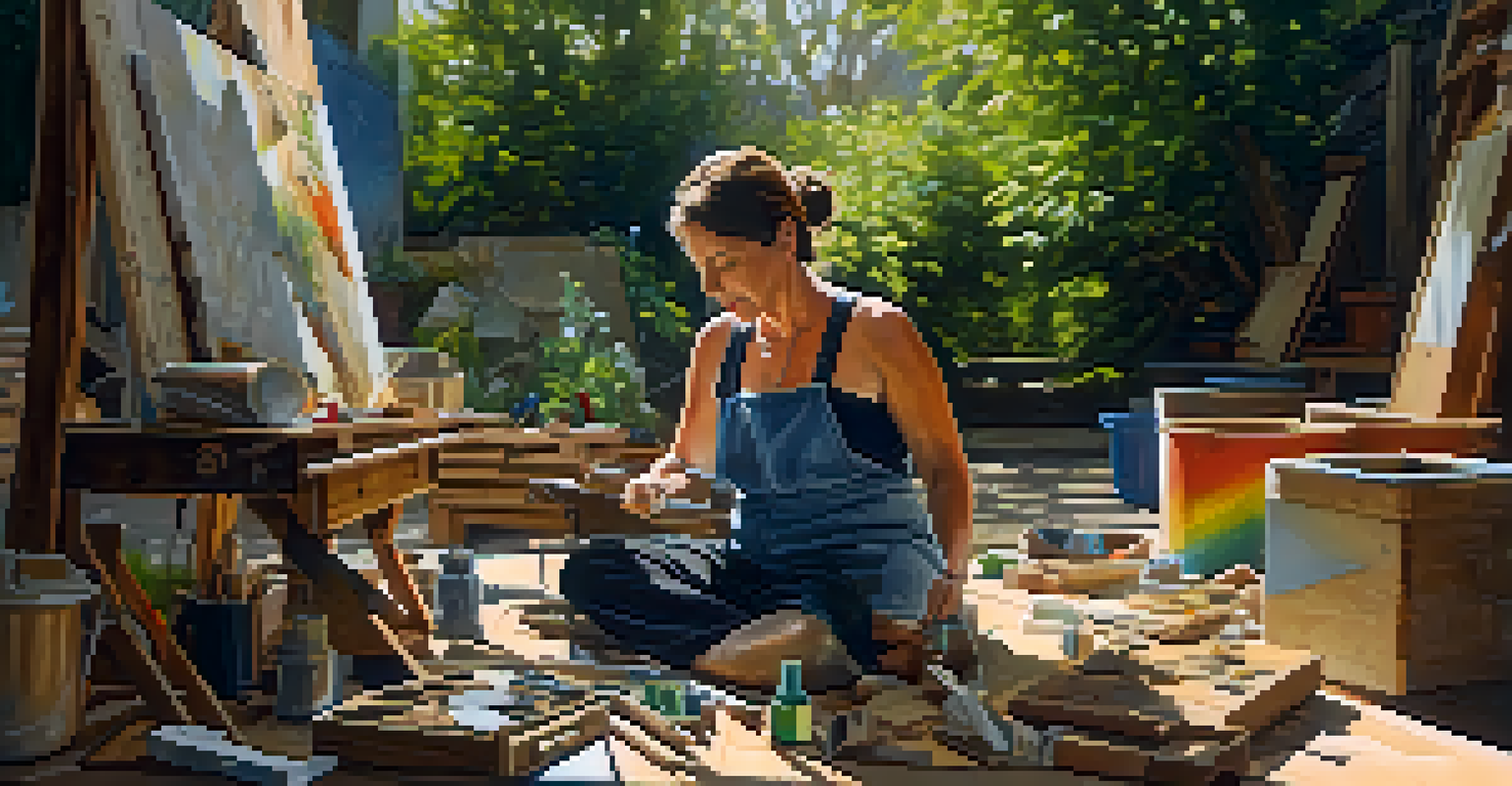Sustainable Practices in Art: Blending Creativity with Nature

Understanding Sustainable Art: An Overview
Sustainable art is a movement that intertwines creativity with environmental consciousness. Artists are increasingly aware of their impact on the planet and are seeking ways to minimize it. This approach not only helps the environment but also inspires others to think critically about their own practices.
The Earth without art is just 'eh.'
At its core, sustainable art challenges the conventional notions of beauty and value in art. It pushes creators to explore materials that are eco-friendly and processes that are less harmful to the environment. This shift invites a new conversation about art's role in society, asking us to consider what we value.
By embracing sustainable practices, artists are not just making a statement; they are actively participating in the global effort to protect our planet. This evolving landscape encourages collaboration between artists, scientists, and environmentalists, leading to innovative solutions and inspiring works.
Eco-Friendly Materials: A New Palette for Artists
One of the most significant shifts in sustainable art is the use of eco-friendly materials. Traditional art supplies often contain harmful chemicals and non-biodegradable components. In contrast, artists are now turning to natural pigments, recycled papers, and organic paints that are kinder to the Earth.

For example, some artists create vibrant colors using plant-based dyes or even waste products from food. This not only reduces waste but also brings a unique character to their work. Imagine using avocado pits to create a soft pink hue or coffee grounds for rich browns—nature becomes the artist's palette.
Embracing Eco-Friendly Materials
Artists are increasingly using natural and recycled materials to create works that are both beautiful and environmentally sustainable.
This movement towards eco-friendly materials encourages a deeper connection between art and nature. It invites both artists and audiences to appreciate the stories behind each material, fostering a greater respect for the planet and highlighting the beauty of sustainability.
Upcycling: Transforming Waste into Art
Upcycling is a fantastic way artists are embracing sustainability by turning waste into art. This practice involves taking discarded materials and transforming them into something beautiful and meaningful. It’s a creative solution to the growing problem of waste in our society.
Art is not a thing, it is a way.
Think about the artist who constructs stunning sculptures from broken glass or discarded wood—each piece tells a story of rebirth. Not only does upcycling reduce landfill waste, but it also encourages a more sustainable mindset among viewers. It prompts us to rethink how we perceive waste and what we consider valuable.
Through upcycling, artists are leading by example, showing that creativity knows no bounds. They inspire others to see potential in what might otherwise be dismissed, proving that art can be both a form of expression and a tool for change.
Community Engagement: Art for Environmental Awareness
Many artists are using their work to engage communities in environmental issues, blending creativity with activism. By organizing workshops, installations, or public murals, they invite the public to participate and reflect on sustainability. This collective effort builds awareness and drives action within communities.
For instance, community art projects that focus on local environmental issues, such as water pollution or deforestation, foster a sense of ownership among participants. As they collaborate, they not only create art but also become stewards of their environment. This engagement transforms art into a powerful vehicle for social change.
Upcycling Waste into Art
Through upcycling, artists transform discarded materials into meaningful art, promoting a sustainable mindset and reducing waste.
Through these initiatives, artists can inspire a shared commitment to sustainability. They remind us that art is not just for viewing—it’s a catalyst for conversation and action, encouraging everyone to play a part in protecting our planet.
The Role of Technology in Sustainable Art
Technology plays a crucial role in advancing sustainable art practices. From digital art to innovative recycling techniques, artists are leveraging technology to create works that are not only visually stunning but also environmentally friendly. This fusion opens up new possibilities for creativity and sustainability.
For example, digital artists can produce works without the need for physical materials, significantly reducing waste. Furthermore, advancements in 3D printing allow artists to create intricate designs using recycled plastics, showcasing the potential of modern technology to support sustainable practices.
By embracing technology, artists can push the boundaries of traditional art forms while promoting sustainability. It’s a reminder that innovation and creativity can go hand in hand, leading to exciting new directions in the world of art.
Art Exhibits and Festivals Focused on Sustainability
Art exhibits and festivals dedicated to sustainability are gaining popularity, showcasing the works of eco-conscious artists. These events create a platform for artists to share their sustainable practices and inspire visitors. They serve as a celebration of creativity that honors and respects the environment.
For instance, festivals featuring eco-friendly installations and performances can captivate audiences while educating them about sustainability. Attendees often leave with a greater appreciation for the environment and a desire to adopt more sustainable practices in their own lives.
Community Engagement in Art
Artists are engaging communities in environmental issues through collaborative projects, turning art into a powerful catalyst for social change.
These gatherings not only highlight the importance of sustainability in the art world but also foster a community of like-minded individuals. They create opportunities for networking and collaboration, ensuring that the conversation around sustainable art continues to grow and evolve.
The Future of Sustainable Art: Trends to Watch
As the movement towards sustainable art continues to evolve, several exciting trends are emerging. One of the most promising is the increasing integration of environmental themes in art, encouraging artists to reflect on their relationship with nature. This trend is likely to influence future generations of artists and art lovers alike.
Additionally, the rise of collaborative projects between artists and environmental organizations is creating impactful works that resonate with broader audiences. These partnerships not only amplify the message of sustainability but also empower artists to make a difference in their communities.

Looking ahead, it's clear that sustainable art will play an integral role in shaping our understanding of creativity and environmental responsibility. As more artists embrace this movement, we can expect to see innovative solutions and inspiring works that continue to blend creativity with nature.